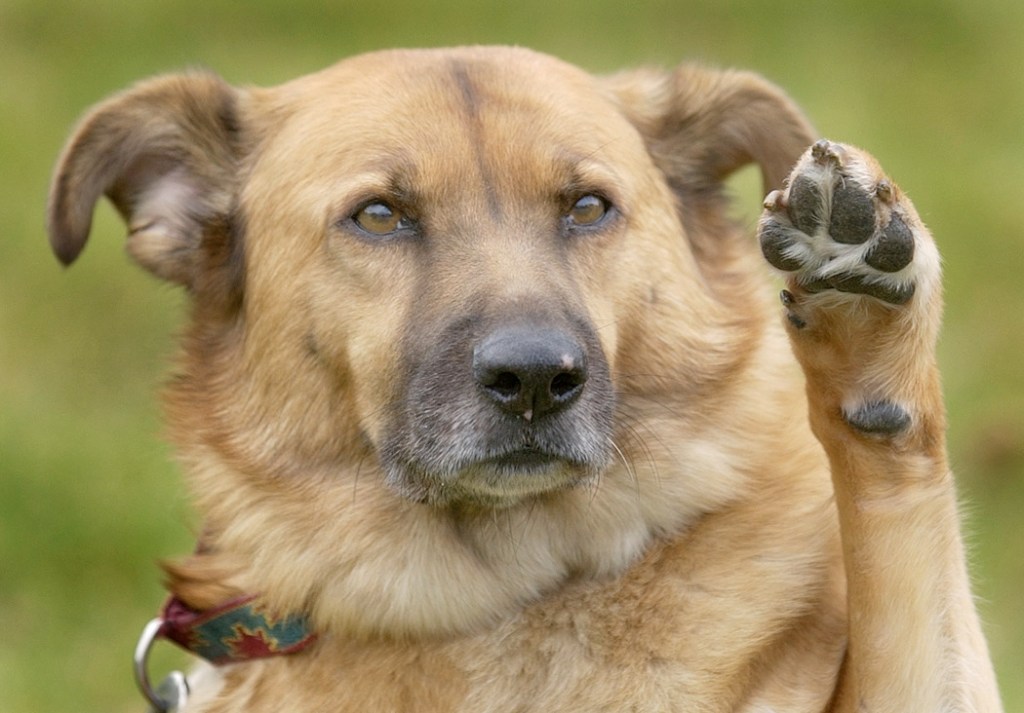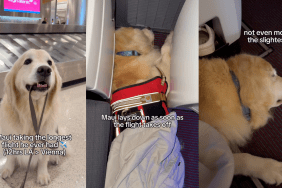This article courtesy of woofreport.com.
Are dogs left-pawed or right-pawed, or do they show any paw preference at all? And does it mean anything if they show a preference for using one paw over another?
Interestingly enough, dogs and many other animals areare right- or left-pawed, and many are also ambidextrous. While numerous studies have been conducted looking for gender and breed differences in terms of ‘pawedness’ in dogs, most studies show varying results with perhaps more that show male dogs have a left paw preference.
On a related note, a 2009 study from the School of Psychology, Queen’s University Belfast found that female cats showed a greater preference for using their right paws while males were more inclined to use their left paws. (Read more about the study on cats at the link below).
How do you determine your dog’s paw preference?
If you are right handed, you may perceive your dog to be left-handed since he or she mirrors your actions – for instance, when you ask for a paw to shake. Below are a number of ways paw preference is commonly determined. Use one or more of these methods to test your pup and repeat the tests to look for patterns.
- Place a treat under the couch and just within reach of your dog to see which paw she uses to reach for it
- Watch which paw your dog uses to hold a bone with while chewing on it
- Place a piece of adhesive tape on your dog’s snout (just for a minute!) to look at which paw she uses to remove it
- Watch which paw your dog uses first in stepping forward
- And the method used in many research studies, place a treat-filled Kong directly in front of your dog to see which paw he uses to hold it to get the food out. A dog may use either paw or both paws.
Does paw preference affect behavior?
Research studies being conducted now and in the past, have connected paw preference with certain behaviors and temperaments. For instance, a 2006 University of New England study from Dr. Nick Branson found the way dogs use their paws may be a sign of how they react to noise. More specifically, findings revealed ambidextrous dogs (those without a paw preference) are likely to be more reactive to noise such as thunderstorms and fireworks.
According to Branson, “It seems possible that dogs that do not favour one side or the other may be prone to experience intense emotional responses to a broad range of stimuli. Animals with lateralised functions may be able to transfer attention from disturbing stimulus more successfully.”
Branson adds this research may help save time and money in training working dogs for sniffing and bomb detection work since fear of noise is a common reason why dogs are rejected from such programs. Trainers will be able to select the most suitable dogs for specific jobs using paw preference as an indicator.
According to Dr. Paul McGreevy, an animal behavior expert at University of Sydney’s Faculty of Veterinary Science and another expert on the topic, the use of such predictors can also save time and money when it comes to training guide dogs. With only about half of guide dogs passing training programs successfully, resources can be allocated to dogs with the highest probability for success.
For more on this interesting topic, explore the links below. And don’t forget to put your dog through the simple tests to determine his or her paw preference!
The Scoop:
Read the interview with Dr. Paul McGreevy, “How much of a successful working dog’s behaviour is linked to being left or right pawed?”
www.abc.net.au/interview
Read about Dr. Nick Branson’s research, “How does handedness affect behaviour?”
www.ozpets.com.au/branson
Read about paw preference in cats, “Female Cats Are Right-Pawed, Males Are Lefties”
www.discovery.com/cat-paws









